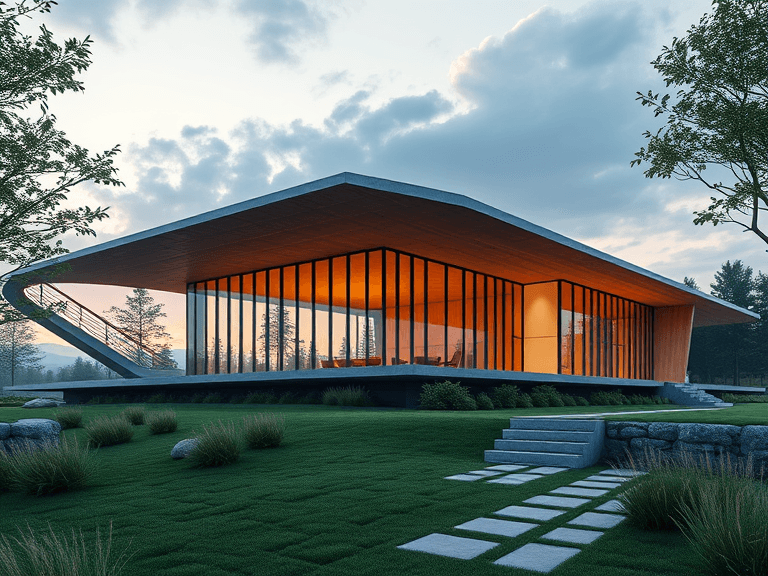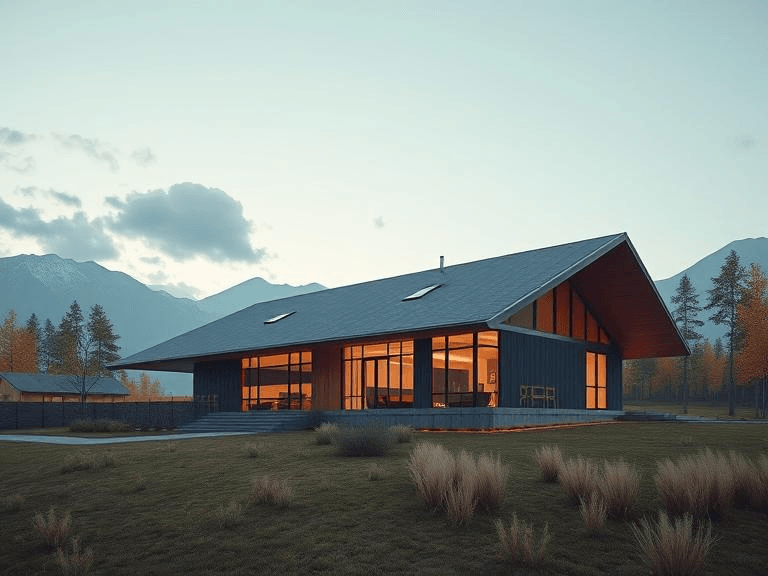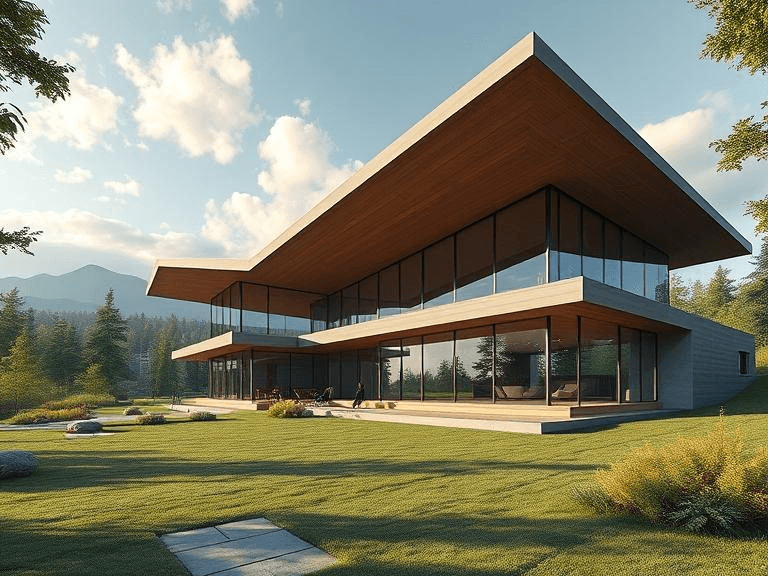
Flat roof systems have gained significant traction in both residential and commercial construction due to their distinctive architectural style and functional advantages. Primarily characterized by a slight pitch that facilitates drainage, flat roofs are not entirely horizontal. They offer a platform for various uses, such as rooftop gardens, HVAC installations, and outdoor terraces, demonstrating their versatility in densely populated urban areas like Toronto.
The popularity of flat roofs in Toronto can be attributed to several factors. Firstly, these roofing systems maximize usable space, an essential consideration in a city where land is at a premium. Flat roofs allow property owners to exploit the space above their buildings, thus expanding usable areas for leisure or utility. Additionally, the straightforward installation process associated with flat roof systems tends to be more economical than traditional sloped roofs, making them a favorable choice for budget-conscious projects.
When choosing the most suitable flat roof system, the advice of a knowledgeable Toronto roofing contractor is invaluable. Various factors contribute to the selection process, including weather conditions, roofing materials, and intended roof usage. Toronto experiences diverse climates, and the chosen roofing system must withstand harsh winters and occasional heavy rainfall. Options typically considered include single-ply membranes, built-up roofs, and modified bitumen systems, each with unique benefits and maintenance requirements.
In urban settings, the importance of adhering to local regulations and building codes cannot be overlooked. It is vital to ensure that chosen roofing solutions meet safety standards and environmental guidelines. As flat roofing systems continue to evolve, property owners are encouraged to engage with professional consultants to navigate the complexities of installation and maintenance effectively.
Understanding the Different Types of Flat Roof Systems
Flat roofs are increasingly popular for both residential and commercial buildings due to their efficient use of space and modern aesthetic. Understanding the different types of flat roof systems available is essential for property owners seeking the best solution for their roofing needs. The three primary types include Built-Up Roofing (BUR), Modified Bitumen, and Single-Ply membranes, each with distinct characteristics and construction methods.
Built-Up Roofing (BUR) is one of the oldest flat roofing systems, consisting of multiple layers of bitumen and reinforcing fabrics to create a durable and watertight surface. The layers are typically laid in a staggered pattern, hence the name “built-up.” BUR roofs typically feature a top layer of gravel or a reflective coating to protect against UV rays and weathering. This system is known for its longevity, making it a popular choice for commercial buildings and industrial applications.
Modified Bitumen systems are essentially an evolved form of BUR, enhancing its mechanical properties. This type employs a single layer of bitumen that is modified with polymers, resulting in increased flexibility and weather resistance. Modified Bitumen can be installed using torch-down application or self-adhering sheets, allowing for a versatile installation process. It is particularly valued for its ease of repair and lightweight design, making it suitable for various building types.
Lastly, Single-Ply membranes represent a more modern approach to flat roofing. These systems utilize a single layer of membrane, often made of thermoplastic (TPO) or ethylene propylene diene monomer (EPDM). The installation process involves mechanical fastening or adhesion, creating a lightweight and cost-effective roofing solution. Single-Ply membranes are highly resistant to UV exposure, punctures, and roof movement, making them a popular choice among Toronto roofing contractors when advising clients on flat roof systems.
Built-Up Roofing (BUR): Benefits and Considerations
Built-Up Roofing (BUR) is a traditional and widely used flat roofing system characterized by its multi-layered structure. This architecture typically consists of alternates layers of bitumen—a roofing material derived from petroleum products—and reinforcing fabrics such as fiberglass or organic felts. The combination of these elements creates a sturdy and resilient roof that is capable of withstanding various environmental challenges.
One of the significant advantages of BUR is its durability. Due to its layered construction, BUR systems are highly resistant to physical damage and can endure harsh weather conditions, making them an excellent option for the varying climates found in regions like Toronto. Additionally, this roofing type offers impressive resistance to UV radiation, which reduces thermal stress on the roofing materials and extends their lifespan. Low maintenance requirements further enhance its appeal; periodic inspections and minor repairs typically suffice to maintain the integrity of the roof.
However, there are notable considerations that should be kept in mind. The installation process of BUR can be time-consuming, as it requires the careful application of multiple layers. This may lead to increased labor costs and extended project timelines, which clients in Toronto should account for when planning a flat roofing project. Furthermore, the weight of a built-up roofing system is considerably greater than other alternatives, such as single-ply membranes. This can pose structural concerns for buildings not designed to support heavy roofing installations.
In conclusion, while Built-Up Roofing (BUR) presents numerous benefits—most notably durability, weather resistance, and low maintenance—the potential drawbacks such as installation time and weight considerations warrant careful assessment. Seeking advice from a qualified Toronto roofing contractor can provide tailored insights applicable to individual project needs, ensuring that homeowners make informed decisions regarding their flat roofing systems.
Modified Bitumen: Versatility and Performance
Modified Bitumen roofing systems are composed primarily of asphalt, modified with polymers to enhance their performance and durability. This composition enables it to exhibit characteristics similar to both traditional built-up roofing and single-ply membranes. The modification process involves incorporating polymers like atactic polypropylene (APP) or styrene-butadiene-styrene (SBS), which significantly increases the flexibility of the roofing material. This feature is particularly beneficial in regions that experience temperature fluctuations, making modified bitumen an excellent option for various climates.
One of the key benefits of modified bitumen roofing is its versatility. It can be installed using several techniques, including torch-down, cold adhesive, or self-adhering systems, which allows for increased adaptability based on the specific needs of a building. Each installation method offers unique benefits; for instance, the torch-down method provides a robust bond, while self-adhering membranes reduce risks associated with open flames during installation. Certified Toronto roofing contractors often recommend modified bitumen for commercial buildings due to its ease of installation and maintenance.
However, like any roofing system, modified bitumen has its pros and cons. The flexibility associated with this roofing type can be a significant advantage in terms of performance, maintaining integrity during expansion and contraction. However, it also comes with the potential for punctures, primarily if not maintained or installed correctly. Moreover, the lifespan of a modified bitumen roof typically ranges from 10 to 20 years, depending on the quality of installation and the materials used. Factors such as exposure to harsh weather conditions, regular maintenance, and proper drainage systems also play crucial roles in determining its durability.
In conclusion, modified bitumen offers a versatile and effective roofing solution, combining performance with adaptability. Evaluating the advantages and challenges associated with this system is essential for making informed decisions when considering roofing options. Adopting sound installation practices and maintaining the roof regularly are vital for maximizing its lifespan and effectiveness over time.

3. Single-Ply Membranes: Modern Solutions for Flat Roofing
Single-ply membranes have gained significant traction in the flat roofing sector, primarily due to their ease of installation and energy efficiency. These roofing systems, characterized by layers that are typically less than one inch thick, come in various types, with the most prevalent being Thermoplastic Olefin (TPO), Polyvinyl Chloride (PVC), and Ethylene Propylene Diene Monomer (EPDM).
TPO is notable for its reflective properties, which can significantly reduce energy consumption by keeping buildings cooler during summer months. Its installation involves adhering the membrane to the roof deck, which is straightforward and allows for quick application. In addition to energy efficiency, TPO membranes boast resistance to UV rays, ozone, and chemical exposure, making them a popular choice among commercial and residential property owners.
PVC, similarly, offers energy-saving benefits, particularly in applications where high temperatures are a concern. Its installation process is also uncomplicated, often adhering directly to the roof substrate. PVC membranes are recognized for their durability and performance in wet conditions, thanks to their resistance to water and puncture. However, the material can be more expensive than its TPO counterpart, which may be a factor for some clients when evaluating costs.
On the other hand, EPDM has established itself as a stalwart in the realm of flat roofing. Its long service life and weather resistance are earned accolades, alongside its applicability across various building types. EPDM typically comes in larger rolls, which may require more labor for installation but can provide a more seamless coverage. However, its dark color may absorb more heat, presenting potential energy efficiency challenges compared to TPO or PVC systems.
While single-ply membranes present numerous advantages, including cost-effectiveness and rapid installation, it is essential to acknowledge potential limitations such as weather-related susceptibility and maintenance requirements. Engaging a professional Toronto roofing contractor can provide valuable advice, ensuring an informed decision tailored to specific roofing needs.
Comparative Analysis of the Three Flat Roof Systems
In the realm of flat roofing, several systems have emerged, each with distinct characteristics that cater to various needs and preferences. This comparative analysis will delve into three popular flat roof systems: Built-Up Roofing (BUR), Modified Bitumen, and Single-Ply Membrane, providing insights into their unique features, life expectancy, cost considerations, and maintenance requirements. Understanding these aspects is critical when seeking Toronto roofing contractor advice on the best choice for your property.
Built-Up Roofing (BUR) is a traditional option that consists of alternating layers of asphalt and reinforcing fabrics, forming a durable and robust system. One of its key advantages is its longevity; BUR can last up to 20-30 years with proper maintenance. Cost-wise, it generally requires a higher initial investment compared to other systems due to material and labor costs. However, the durability may lead to lower long-term expenses. Maintenance is relatively straightforward, mainly involving regular inspections and minor repairs to the surface.
Modified Bitumen, a newer alternative, is a descendant of BUR developed to enhance performance. It features a rubberized asphalt formulation making it both resilient and versatile. The life expectancy of Modified Bitumen roofs is approximately 15-20 years. The installation tends to be less expensive than BUR, yet can vary depending on the method employed (torch-applied or self-adhering). Routine maintenance is required but is often less intensive than BUR, making it an attractive option for budget-conscious property owners.
Lastly, Single-Ply Membrane systems, including TPO and EPDM, are increasingly popular for their ease of installation and flexibility. These roofs generally have a life expectancy of around 15-30 years. In terms of cost, Single-Ply systems can be more economical upfront, often leading to lower installation costs. They require less maintenance, as they are less prone to leaks, but periodic inspections are advisable to ensure longevity. The variety of materials available in this category allows for customization based on specific needs, which is an essential aspect to consider.
By understanding the unique features, life expectancy, cost implications, and maintenance requirements of each roofing system, property owners can make informed decisions. Consulting with a Toronto roofing contractor can further streamline this process, ensuring that the selected roofing system aligns with both needs and budget considerations.
Selecting the Right Flat Roof System for Your Property
Choosing the appropriate flat roof system is crucial for ensuring the long-term durability and functionality of your property. Several factors should be taken into account when making this decision, including climate, building structure, aesthetic preferences, budget constraints, and adherence to local regulations.
The local climate plays a significant role in determining the suitable roofing materials. For instance, in regions with heavy snowfall or extreme temperatures, a flat roof system that can withstand these conditions is essential. In contrast, milder climates may allow for a broader range of options. Consulting with a Toronto roofing contractor can provide valuable insights into which materials are best suited for the local weather patterns.
Another critical aspect involves the structure of the building itself. Different flat roof systems possess varying weight loads, which must align with the engineering specifications of your property. Ensuring that the chosen roofing system complements the building’s design will enhance both functionality and aesthetics. It’s essential to consider design trends that coexist harmoniously with your property types, such as urban or residential styles.
Budget is an inherent consideration when selecting a flat roof system. Costs can vary widely based on the materials used, installation complexity, and the contractor’s expertise. It’s prudent to obtain multiple quotes from reputable contractors and assess the overall value rather than merely opting for the lowest cost offer. Furthermore, a flat roof’s lifespan and associated maintenance expenses should factor into the budget decision.
Local regulations may also impact your choice of roofing system. Building codes dictate specific requirements and compliance issues that must be addressed. Engaging a knowledgeable Toronto roofing contractor can assist in navigating these regulations to ensure your project adheres to all legal standards.
By thoroughly evaluating these factors, property owners can make informed decisions when selecting a flat roof system that delivers both functionality and aesthetic satisfaction. Engaging with professionals and conducting due diligence will ultimately lead to a successful roofing project.
Common Maintenance Tips for Flat Roof Systems
Maintaining flat roof systems is crucial for ensuring their longevity and optimal performance. Regular maintenance practices can significantly extend the lifespan of these structures, averting costly repairs and replacements. Here are some essential maintenance tips that all building owners should consider.
One of the most critical practices is conducting regular inspections of the roof. Ideally, inspections should occur at least biannually, especially after severe weather conditions like storms or heavy snowfall. During these evaluations, look for signs of wear and tear, such as cracks, blisters, or other damage. Identifying issues early enables prompt repairs, thus preserving the roof’s integrity.
Cleaning debris is another fundamental step. Leaves, branches, and other materials can accumulate on flat roofs, impeding proper drainage. Clogged drainage systems can lead to water pooling, which increases the risk of leaks and structural damage over time. Therefore, it is advisable to clear gutters, downspouts, and drains regularly to maintain effective water flow.
Addressing leaks promptly is also imperative. If you notice water stains on ceilings or walls, it typically indicates a leak in the roof. Engage a Toronto roofing contractor to evaluate the situation and perform necessary repairs. Expert assistance can diagnose underlying issues that may not be visibly apparent, providing you with a comprehensive solution.
Moreover, maintaining an effective drainage system is essential for flat roofs. Ensure that the drainage solutions are functioning correctly, as improper drainage can cause significant stress on the roofing material. Regularly check for blockages and seek professional maintenance when needed to address any concerns.
Incorporating these maintenance tips into your flat roof care routine is vital. Relying on the expertise of Toronto roofing contractors can enhance the maintenance process, ensuring that your flat roof system remains durable and functional for many years.
Conclusion: Making the Best Choice for Your Flat Roof
Choosing the right flat roofing system is crucial for ensuring the longevity and functionality of your building. Throughout this article, we discussed the top three flat roof systems that have gained popularity among homeowners and commercial property owners alike. Each system comes with its own set of advantages and considerations, making it essential to evaluate which option best fits your specific needs and budget. The three systems highlighted—EPDM, TPO, and Built-Up Roofing—each offer unique benefits that can significantly affect the performance of your flat roof.
EPDM, known for its durability and cost-effectiveness, is an excellent choice for those seeking a reliable solution with minimal maintenance. Meanwhile, TPO stands out due to its energy efficiency and reflective qualities, which can contribute to lower energy bills and a more sustainable building environment. Lastly, Built-Up Roofing, often favored for its robustness, provides a long-lasting solution through its layered approach, although it may require a higher initial investment.
As you ponder the best option for your flat roof, it is advisable to seek out the expertise of a qualified Toronto roofing contractor. These professionals possess the knowledge and experience necessary to guide you in making an informed decision tailored to your property’s needs. They can offer personalized advice, ensuring that your selected roofing system is installed correctly, thus extending its lifespan and maximizing its performance.
In conclusion, investing time in researching and consulting with professionals will pay off in the long run. A well-chosen flat roofing system will not only enhance the functional integrity of your building but also protect it from potential water damage and other harsh environmental factors. Make your flat roof choice an informed one by engaging with a trusted roofing contractor in Toronto today.


